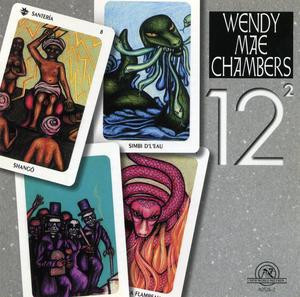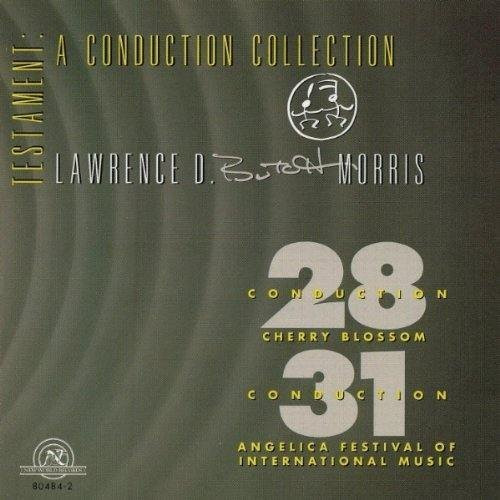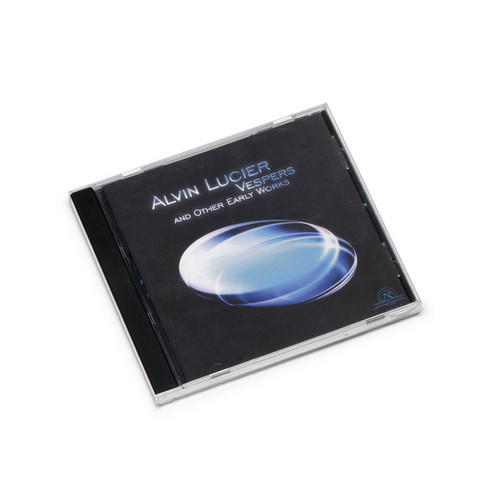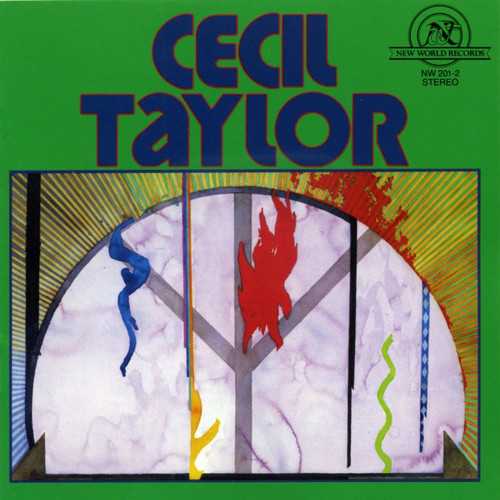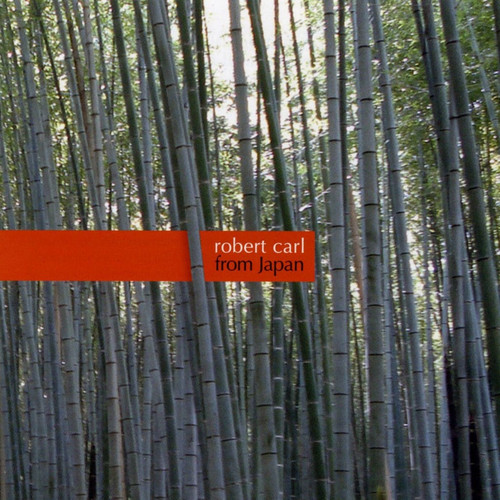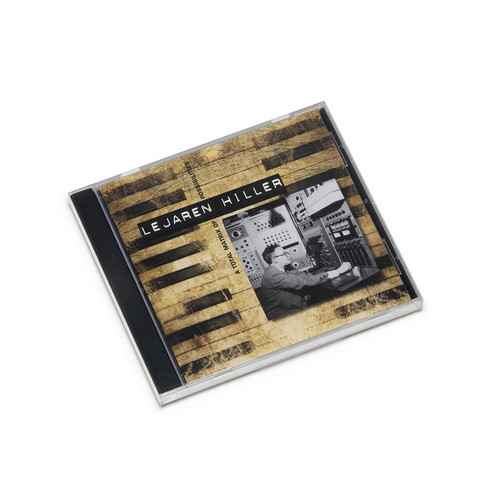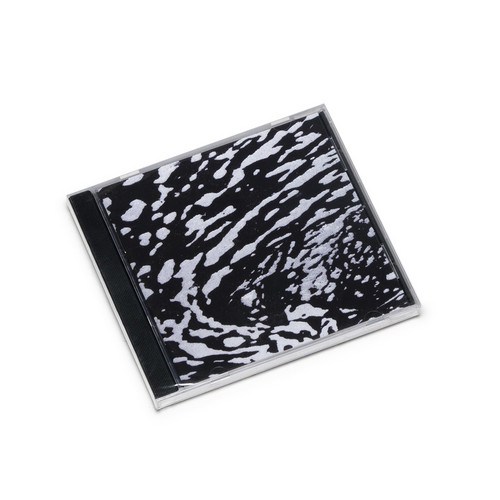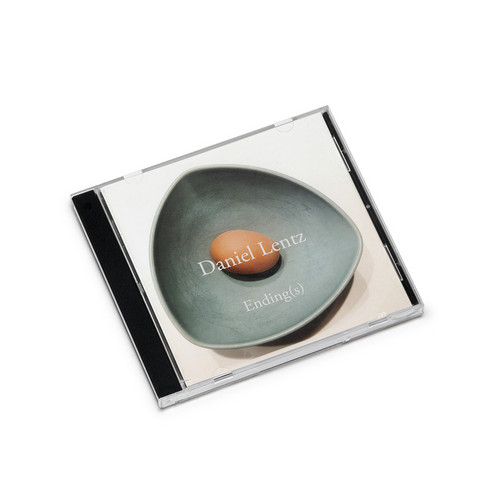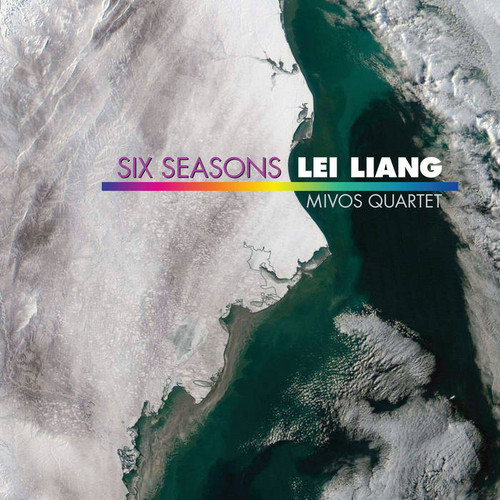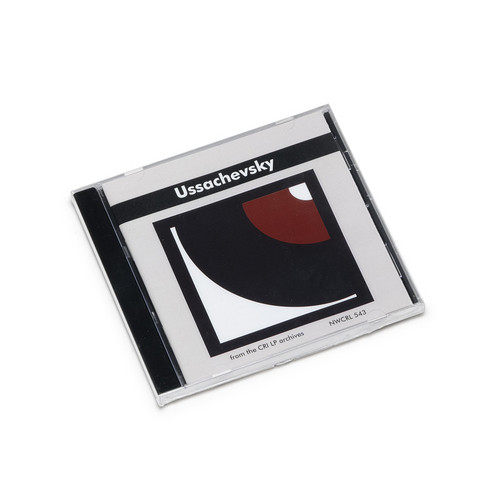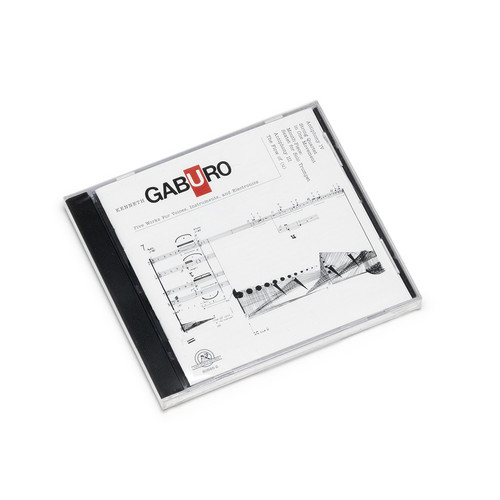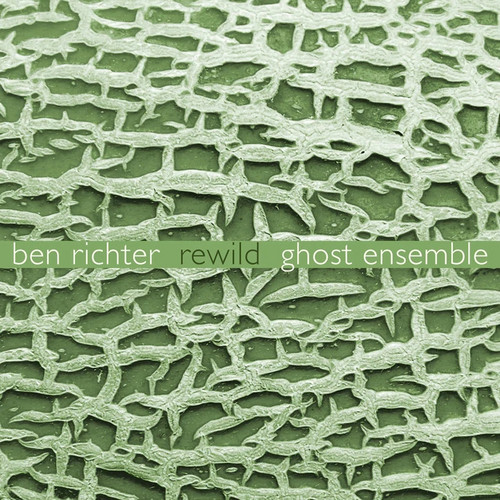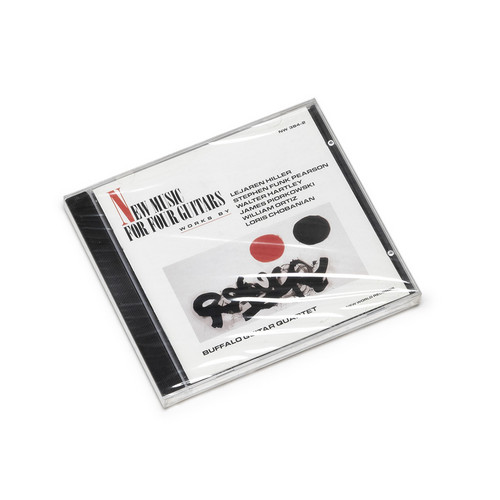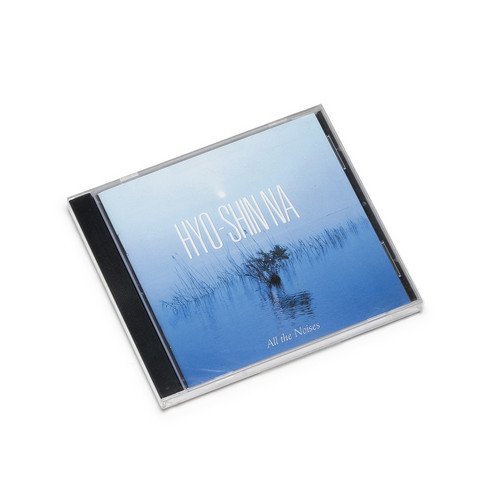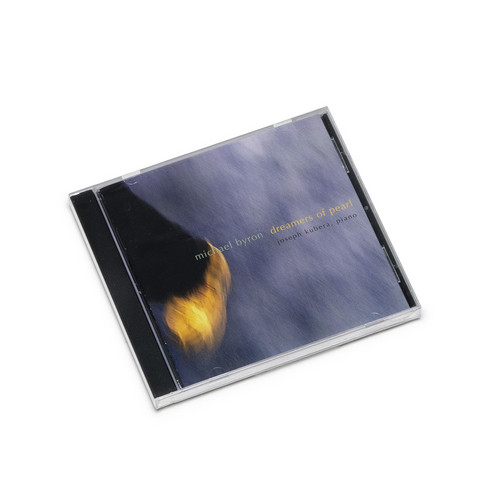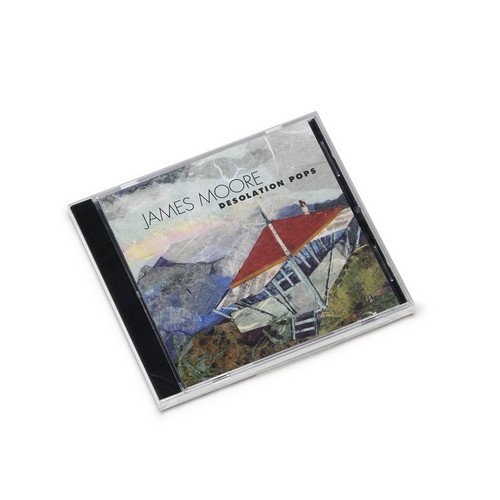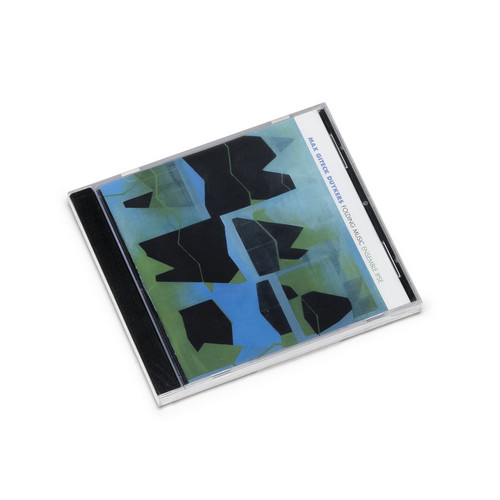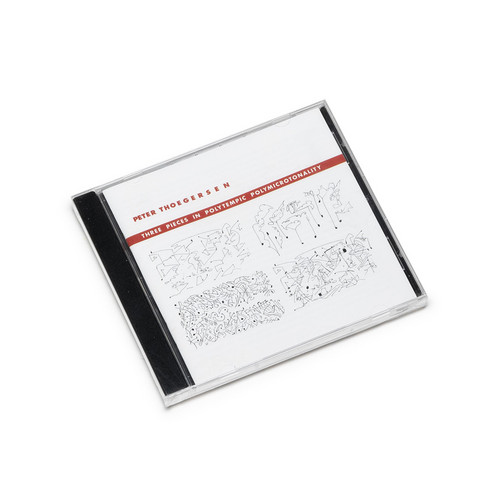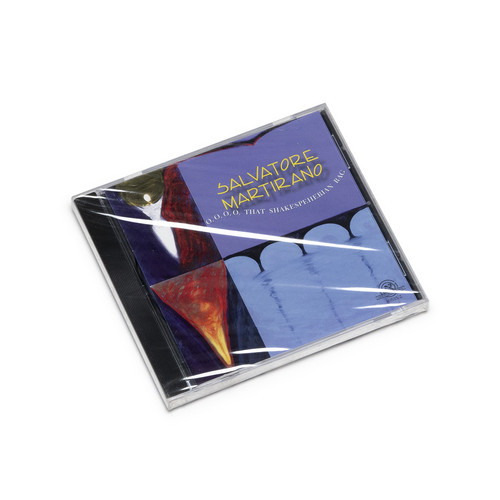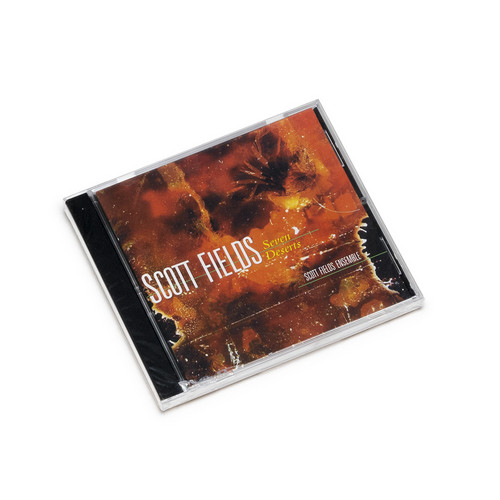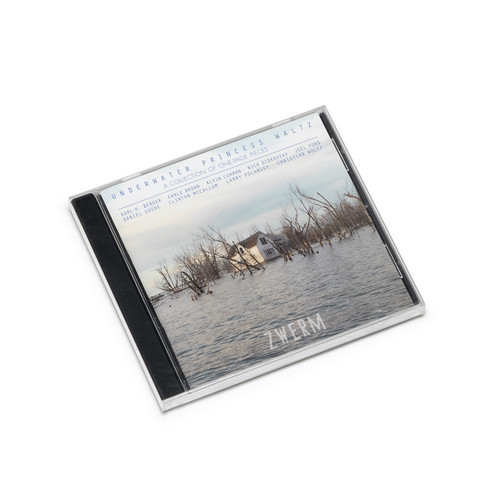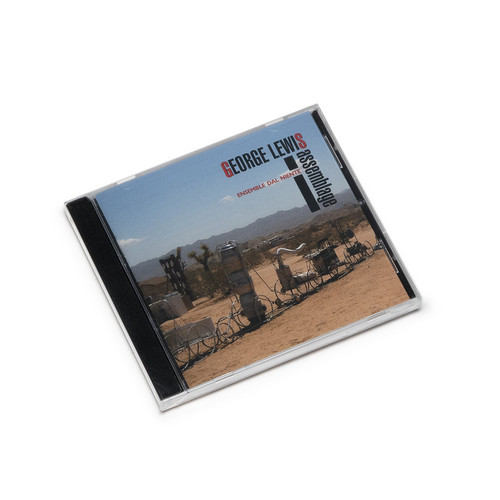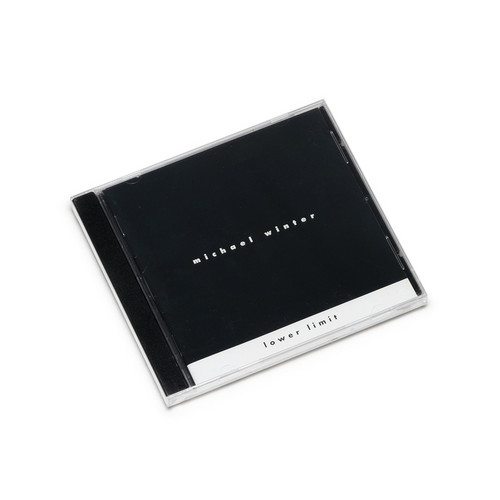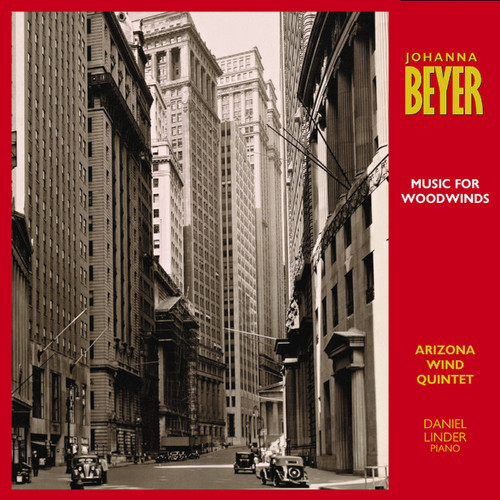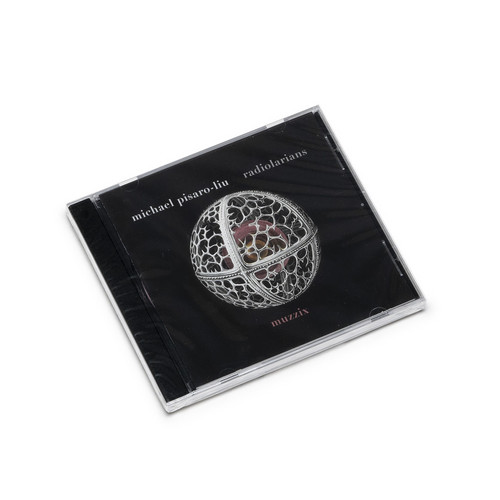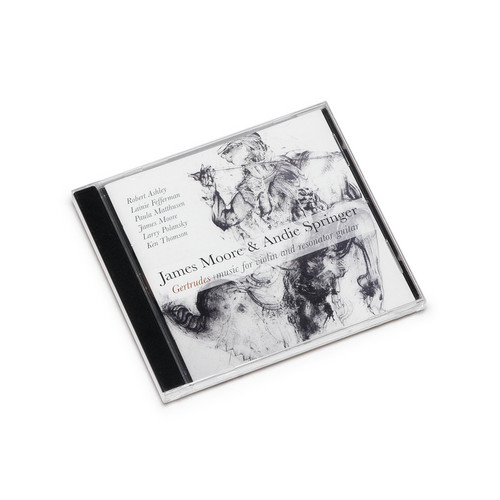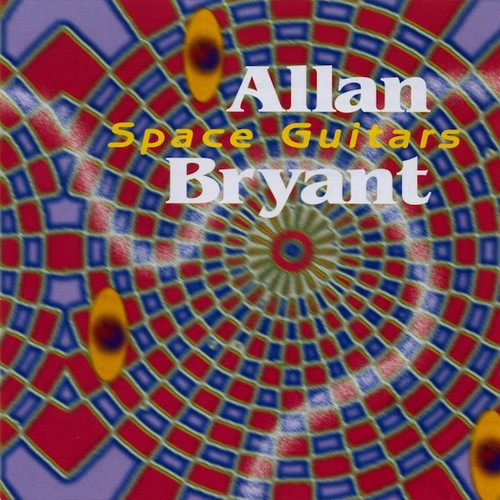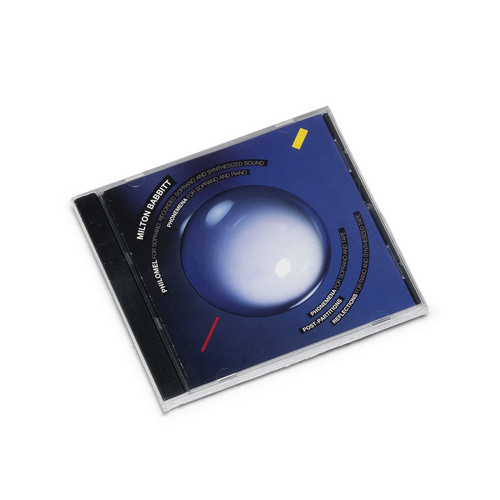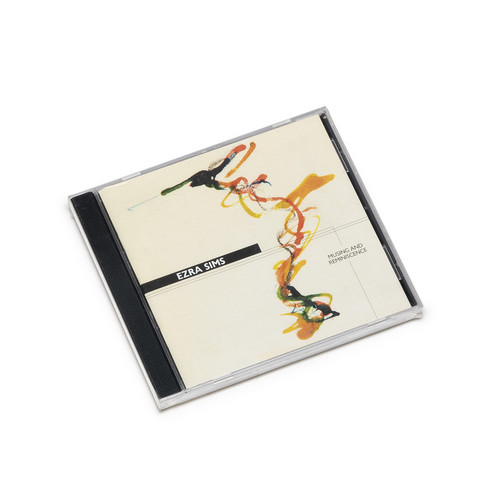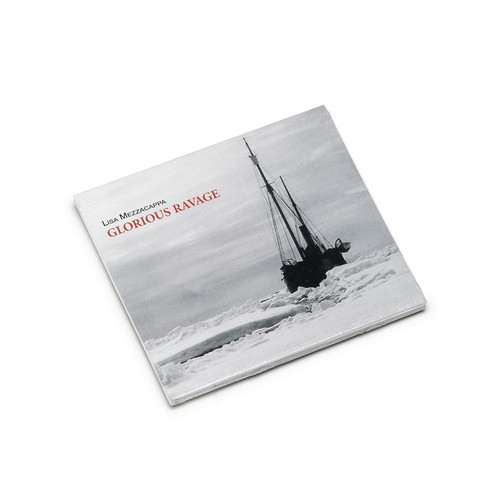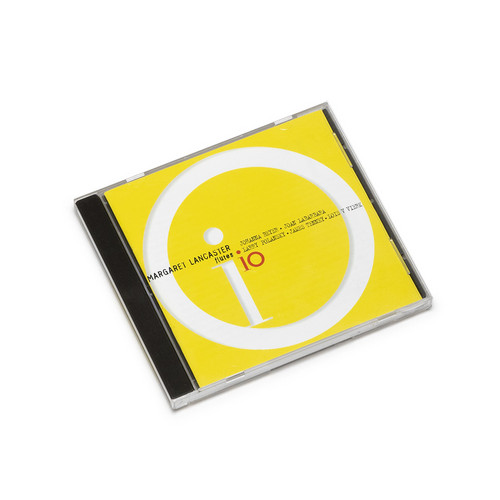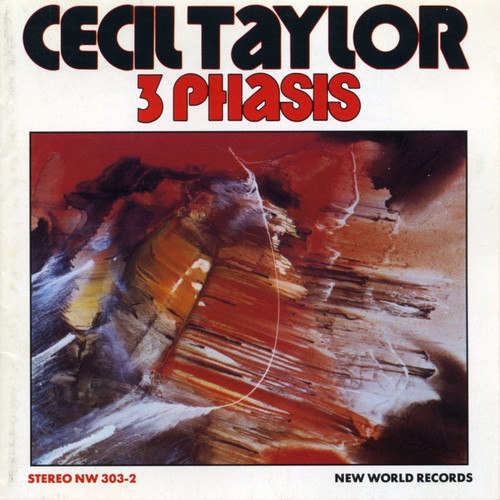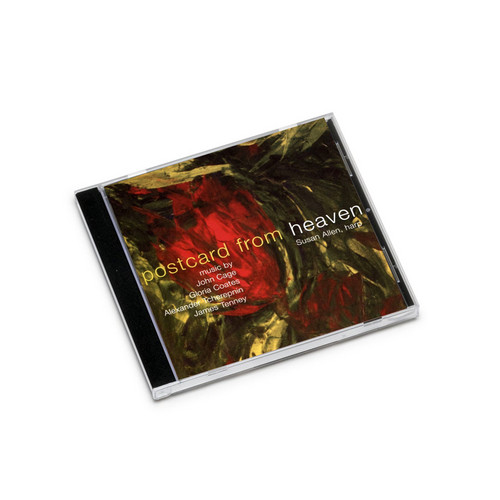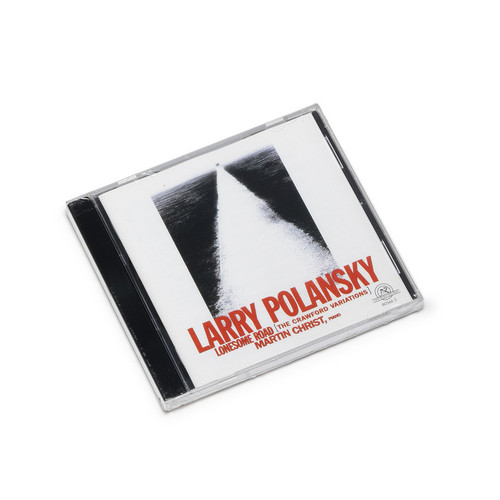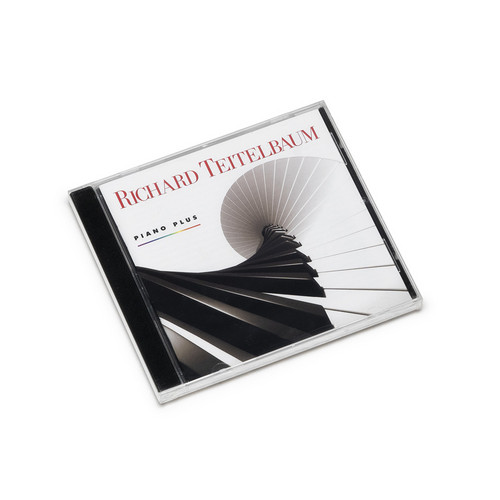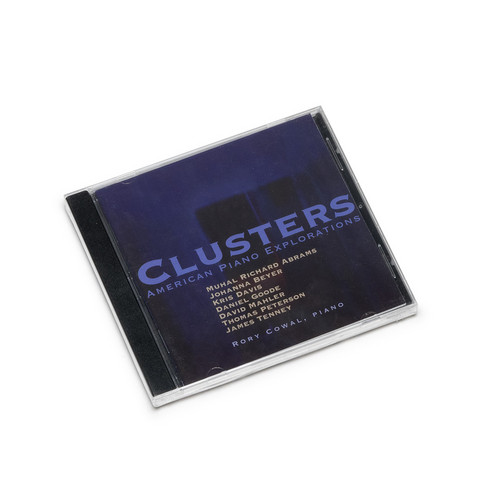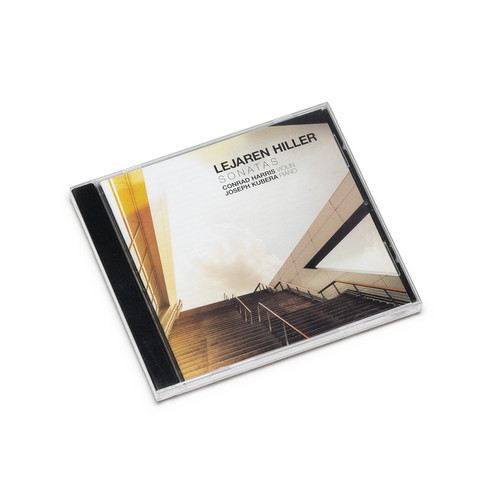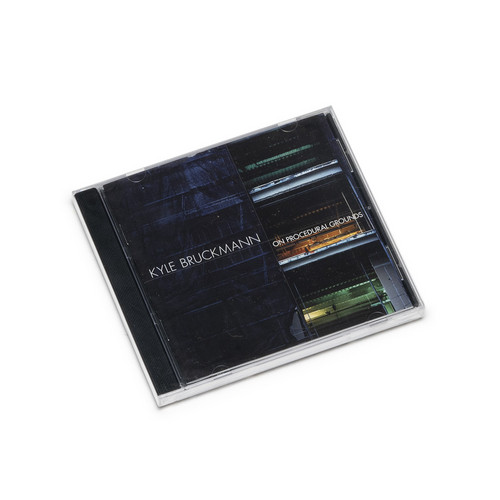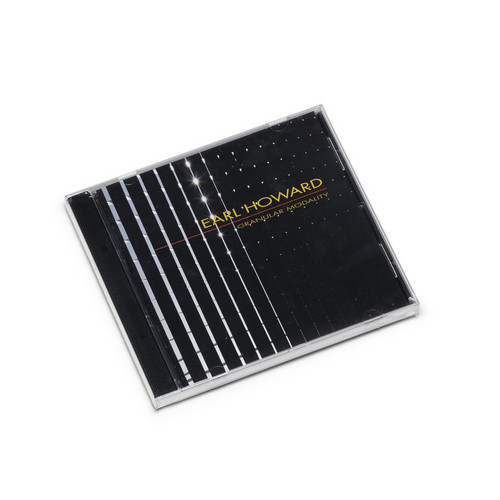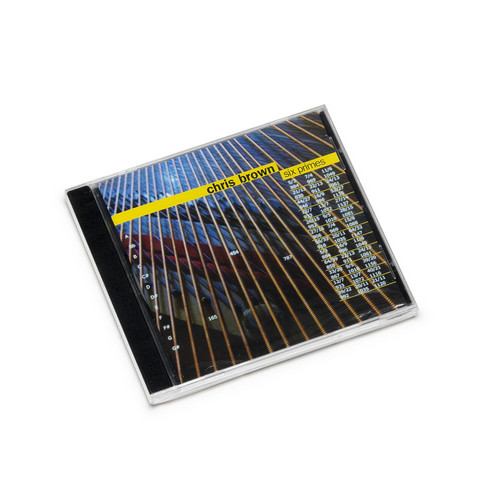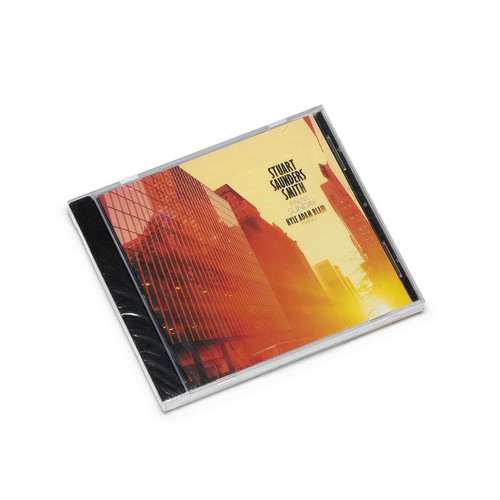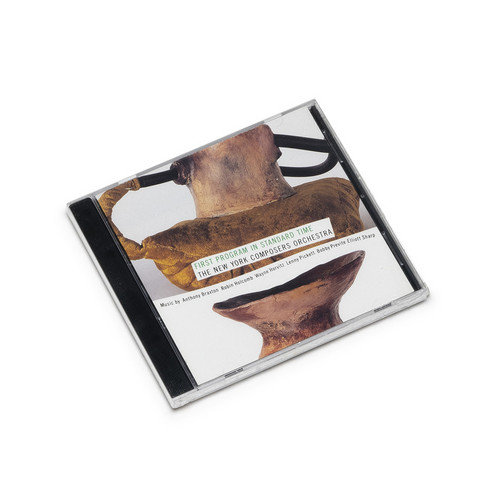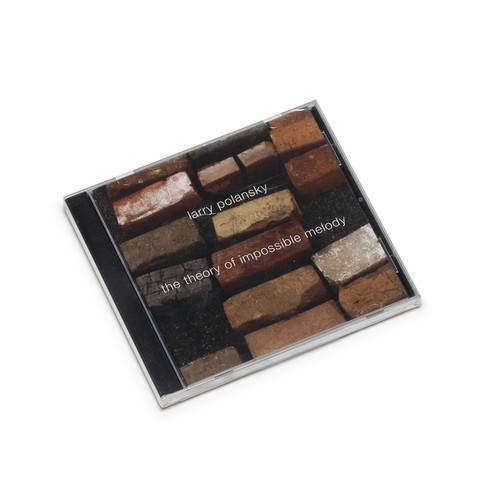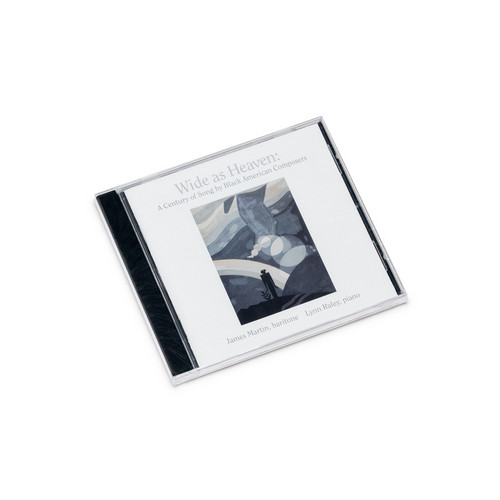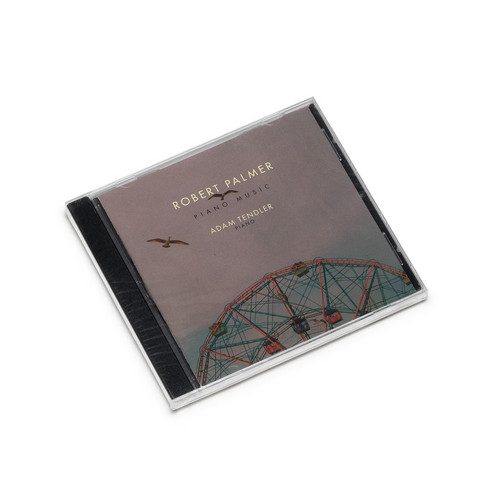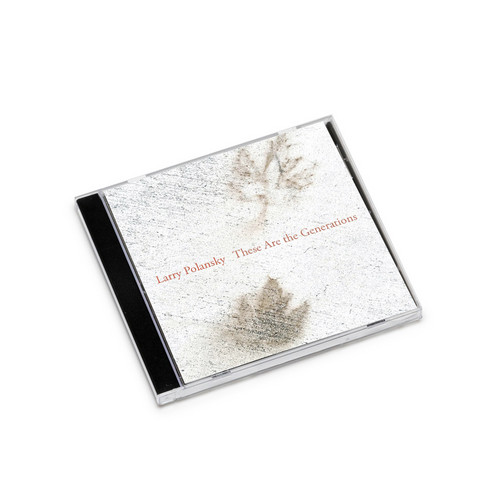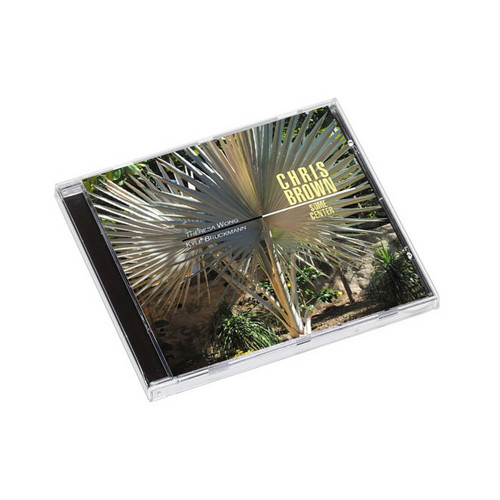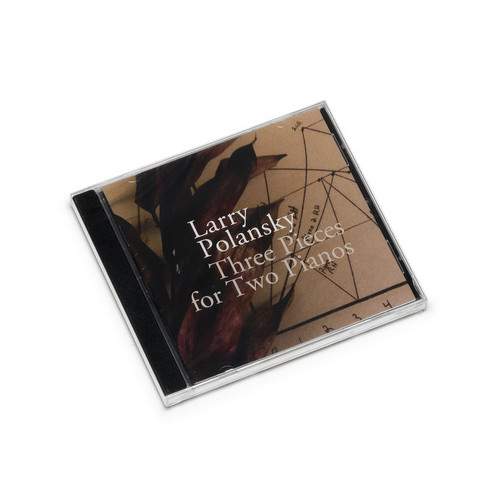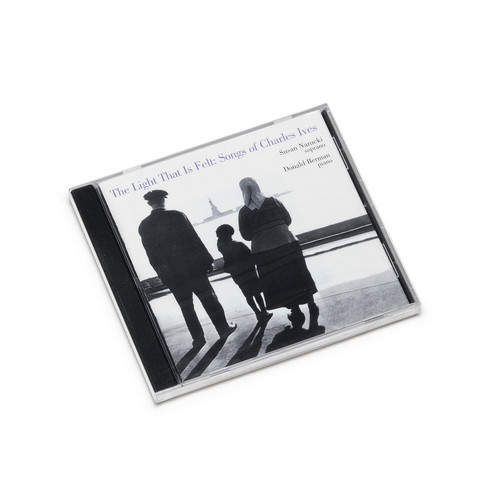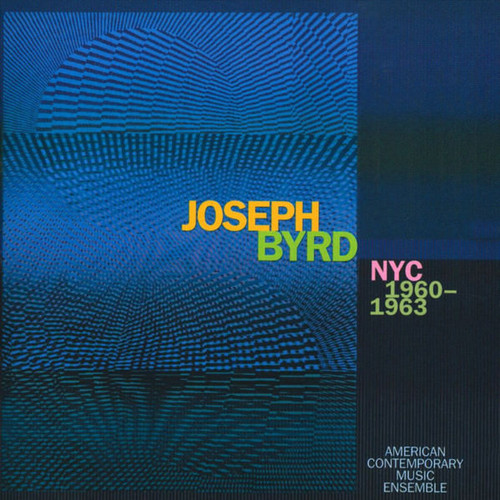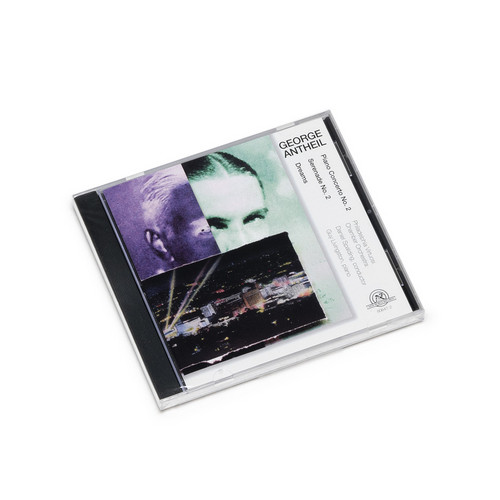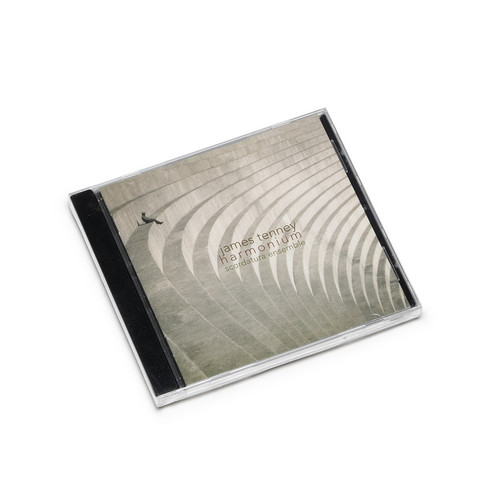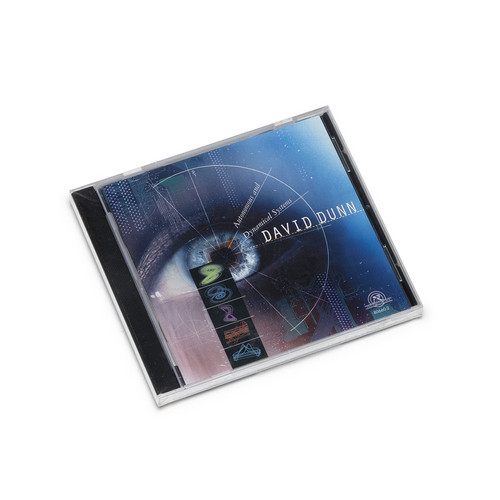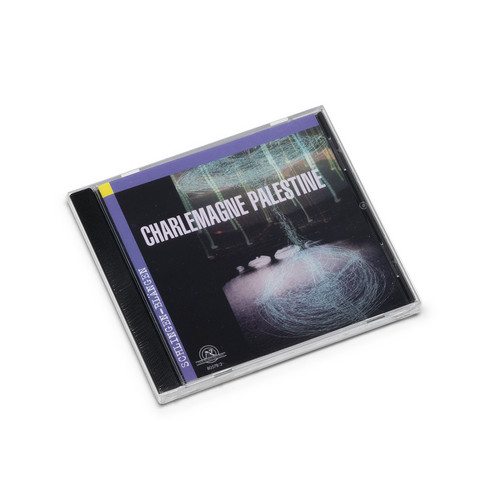Search (1 labels)
12²
1998 release ** "Wendy Mae Chambers (b 1953) is known for the scope and originality of her works, typified by large and unusual instrumental combinations. In Chambers’s own words, Twelve² is a voodoo tone poem in eleven movements for twelve percussionists. Each movement is about 4 minutes in length. The last movement is 4'33" of lots of sound (in tribute to John Cage's 4'33" of silence). Voodoo drumming [calls] forth Cage’s spirit and the bells, chimes, and gongs [celebrate] ... celestial qualit…
Conduction #28: Cherry Blossom, conduction #31: Angelica
1995 release ** Conduction #28: Cherry Blossom: P3 Art and Environment, Tokyo, Japan; March 28, 1993Yukihiro Isso, nokan; Shonosuke Okura, ohtsuzumi; Makiko Sakurai, shomyo, music box; Michihiro Sato, tugaru syamisen; Kizan Daiyoshi, shakuhachi; Yuji Katsui, violin; Haruna Miyake, piano; Asuka Kaneko, voice; Shuichi Chino, computer; Koichi Makigami, voice; Yoshihide Otomo, turntables, CD player; Kazutoki Umezu, bass clarinet; Sachiko Nagata, percussion; Motoharu Yoshizawa, electric bass; Kazuo O…
Vespers and Other Early Works
Alvin Lucier is best known for his pioneering work in the mid-sixties in the exploration of sonic environments, particularly sounds that we would never perceive under ordinary circumstances. Vespers and Other Early Works restores to the catalog several of his key works from that time. In Vespers (1969) performers with Sondols (sonar-dolphin), hand-held pulse wave oscillators, explore the acoustic characteristics of given indoor or outdoor spaces by monitoring the echoes of the pulse waves off th…
Cecil Taylor Unit
This record presents further evidence of Cecil Taylor’s genius and awesome ability to work within the group context, in which he furthers his exploration of the piano “as catalyst feeding material to soloists in all registers.” This music at times gets very intense. It will take you down forgotten little streams in your mind and swell them with rivers of sound as Taylor pours notes on your ears. Listen.
* * *
"More than free, the music has a beguiling formal structure, and Taylor feeds all the e…
From Japan
Robert Carl (b 1954) has long been interested in Japanese music and culture, and in the spring of 2007 he received a grant from the Asian Cultural Council to travel to Japan to interview Japanese composers between the ages of thirty and sixty—his contemporaries, whom he describes as the “post-Takemitsu” generation. The complex interplay of history, culture, and memory has long occupied Carl’s thoughts, and forms the basis of his musical exploration of Japan.
Carl’s perspective of the relationshi…
Lejaren Hiller: A Total Matrix of Possibilities
Lejaren Hiller (1924-1994) was a musically eclectic composer, often combining several different types of techniques in the same piece. In the mid-sixties, he asserted that his "objective in composing music by means of computer programming is not the immediate realization of an aesthetic unity, but the providing and evaluating of techniques whereby this goal can eventually be realized." In this sense Hiller was a forward-looking composer, in that each piece was an experiment that lead towa…
'Waves breaking on rocks
Peter Garland (b. 1952) studied with Harold Budd and James Tenney at Cal Arts and had long student-mentor friendships with Lou Harrison, Conlon Nancarrow, Paul Bowles and Dane Rudhyar. Like Harrison, Garland has forged his own musical vocabulary as a kind of new indigenous music, celebrating pan-cultural experience and vision, and unafraid to suggest that music can still give us a glimpse of that which is sacred. Waves Breaking on Rocks (Elegy for All of Us) (2003) is a suite of elegies that was…
Ending(s)
While certain recognizable fingerprints are found throughout the body of Daniel Lentz's (b. 1942) work, he has never been content to settle within one particular style or mode of music for long, moving ever forward in an evolutional continuum, an overriding arc that defines his growth as a composer -- beginning with traditional music, diverting into electronic music, moving into performance art pieces for his various touring groups, then sallying into minimalism, followed by work distinguished f…
Six Seasons
Tip! "A cycle of six movements and a coda, Six Seasons is as protean as the ocean waters that serve as its substance and underlying metaphor. In creating a space of many spaces and multiple temporalities, Lei Liang (b. 1972) resides in select company, artists who have fashioned a syntax of exploration both attendant to and divergent from music history’s established grooves and curves of innovation and tradition. Of the composers now lionized through the ever-expanding and often-arbitrary canon, …
Dialogues and Contrasts / Colloquy
The title Dialogues and Contrasts describes the nature of the exchange which takes place between the performer and the materials committed to tape. In the first movement the exchange is more in the nature of an argument. Though initially each side appears to favor an independent thematic course, as the movement progresses the performers engage in direct response to the statements on tape. The second movement is more subdued and reflective, with many solo passages, particularly from the French ho…
Five Works For Voices, Instruments, And Electronics
Kenneth Gaburo (1926–1993) composed works for instruments, voices, electronics, multi-media, theater, and a variety of other resources. Foremost among his many interests was a concern with the voice and with language—how we shape language and how we are shaped by it—and with making works that existed somewhere between the boundaries of music and language. Of the works on this CD, three are intensely concerned with what Gaburo termed “Compositional Linguistics” (Antiphony III, Antiphony IV, and M…
Rewild
Inspired by the perspectives and timescales of nonhuman beings and distant orders of magnitude in the universe of life, Rewild seeks new strata in musical parameters, exploring the uncanny zones at which pitch becomes rhythm, harmonic interval becomes beating rate, and timbres morph over time. Like a giant body or ecosystem slowly breathing, Rewild’s constantly transforming sound-world orients temporal perception toward global listening. By offering an aural metaphor for the interacting gradual …
New Music for Four Guitars
The guitar is the popular instrument par excellence. As apt for Brazilian sambas for Irish ballads or American blues, the guitar has also recently been adapted as a surrogate for plucked instruments from non-Western musical traditions; no idiom seems beyond its reach. When social history of the second half of the twentieth century is written, it may be seen that the guitar is as central to this era as the piano was to the nineteenth century. But while the piano was an emblem of upward social asp…
Hyo- shin Na: All the Noises
Ocean/Shore 2 (2003) is one of a series that are studies on the use of diverse materials and on the coexistence, within a piece of music, of various instruments. As in the meeting and interaction of water and land, these instruments can have fundamentally very different characters (piri and violin, or clarinet and cello), yet shouldn’t lose their basic nature in the interests of harmony, or even beauty. On first hearing, one might consider All the Noises in the World (2006) to be a piece of trad…
Dreamers of Pearl
Joseph Kubera, piano. Michael Byron (b. 1953) was a pupil of James Tenney, and later, of Richard Teitelbaum. The body of music he has composed over the past thirty years has been harmonically rich, rhythmically detailed, and increasingly virtuosic. Dreamers of Pearl (2004-05) evinces a sensitivity for the sound of the piano, a sensibility of extended playing-listening, and an interest in repetition and change through gradual and seemingly clandestine processes that transform and extend what we h…
Desolation Pops
"James Moore (b. 1979) is a composer with an eye toward the world of games and experimental theater. He’s an electric guitarist who’s willing and eager to treat his instrument as a playground, not a reverent, static tradition. He’s a tinkerer, a charmer, and a fella who’s always up for another round at the bar of wacky ideas and intellectual questioning. He’s excited for new and unexpected opportunities for collaboration, but always maintains a voice that seems to stay recognizably his own throu…
Folding Music
Max Giteck Duykers (born 1972) stands out for his ongoing dedication to the sound worlds made possible by the Pierrot ensemble. Therefore it is fitting that the first recording devoted exclusively to Duykers's music should feature two of the four "Pierrot sextets" he has composed this far, that the remaining four works on the disc are playable by P6/P6+ subsets, and that everything here (except for the one vocal work which adds guest soprano Zen Wu) is performed by members of Ensemble Ipse, the …
Three Pieces in Polytempic Polymicrotonality
The author of these notes has spent his life explaining radical music, and the music on this disc may be the most radical I've ever written about. Peter Thoegersen (b. 1967) is not yet a name known to the music world; not for any lack of connection to other famous musicians, but because he came to composition late, and because his artistic aims are so broad and complex that they have taken years to evolve. His aesthetic is well defined, and he is upfront about having a name for it: "Polytempic P…
O, O, O, O, That Shakespeherian Rag
O,O,O,O, That Shakespeherian Rag collects six of the most important compositions from his relatively small body of work. By the late 50s Martirano had begun to freely incorporate elements of jazz and popular music. O,O,O,O, That Shakespeherian Rag(1959), one of his two magnum opuses, is a prime example of this musical synthesis—a serialist choral setting of passages from three Shakespeare plays, accompanied by a chamber orchestra that includes a jazz ensemble. Schoenberg meets bebop in a wild, i…
Seven Deserts
Wrestling with the notion of balancing both formal construction and creative spontaneity has allowed Scott Fields (b 1952) to compose a powerful body of work with ties to extramusical concerns from the realms of literature, philosophy, and science. Seven Deserts (2019), rather than operating from a fixed narrative structure with predetermined events, lays out the ground rules for a manifestation that is absolutely identical in every performance in its operations and sonic vocabulary, but with ea…
Underwater Princess Waltz
Underwater Princess Waltz is a bold and imaginative project by the Belgian/Dutch electric guitar quartet Zwerm, featuring a vibrant collection of “one-page pieces” by leading figures in American experimental music: Karl Berger, Earle Brown, Alvin Curran, Nick Didkovsky, Joel Ford, Daniel Goode, Clinton McCallum, Larry Polansky, and Christian Wolff. The “one-page piece” is a unique compositional format-each work fits entirely on a single sheet of paper, whether in traditional notation, prose, gra…
Sound Forms for Piano: Cage/ Cowell/ Johnston/ Nancarrow
“... in the past, the point of disagreement has been between dissonance and consonance, it will be, in the immediate future, between noise and so-called musical sounds.” — John Cage The most characteristic features of American music are its eclecticism and innovation. The works presented here are perfect examples; their only common feature is that they were written for a piano altered in some way.
The disc opens with the eerie, wailing cries of Henry Cowell’s (1897-1965) The Banshee. In order …
Mass/Seven Pious Pieces
This collection of two tonal works by composers known for their non-tonal compositional style is a fine example of contemporary approaches to sacred choral music. Salvatore Martirano’s Mass is a setting of a traditional Latin Mass whilst Donald Martino’s Seven Pious Pieces sets religious texts by Robert Herrick. The vocal writing is masterful with transparent textures and flowing contrapuntal lines.
Assemblage
George Lewis (b 1952) combines an astonishing level of creativity with trenchant critiques of many traditional conceptions about experimental music. The four compositions on this album reference a wide range of ideas, from rhetoric in Ancient Rome to actor network theory, and the album's eponymous composition finds its grounding in the concept of the "assemblage," (or agencement in French) a pragmatic, material, non-teleological approach to composition. Among the album's compositions, Mnemosis (…
Lower Limit
The immersive sonic textures that characterize Michael Winter's (b 1980) music are crafted from comprehensive lists of data, with each composition encompassing a musical question that is addressed algorithmically. A performance lasts for as long as it takes to "answer" the question, expressing all results as efficiently as possible. Winter leaves room for unanticipated results by keeping things open, notably in the instrumentation, which, rather than specifying instruments, tends to designate ce…
Music for Woodwinds
Through her novel approaches to texture and melody, German-American composer Johanna Magdalena Beyer (1888–1944) became one of the most distinctive modernist voices of the mid-20th century. Beyer was the first woman known to have composed for electric instruments (Music of the Spheres, 1938). Her compositions anticipate elements of minimalism, a movement that would manifest two decades after her passing. Beyer was long omitted from the written history of ultramodernism, but her activities as a c…
Michael Pisaro-Liu: Radiolarians
Radiolorians (2018) finds Pisaro-Liu drawing inspiration from another gifted observer of this world-in-variation, the German zoologist, naturalist, and philosopher Ernst Haeckel (1834–1919), who promoted and popularized evolutionary thought via extensive monographs and artful renderings of insects, animals, sea creatures, and embryos. For Radiolarians, Pisaro-Liu creates what he terms “transcriptions” of individual radiolaria species depicted in Haeckel’s drawings. Radiolarians comprises fourtee…
Gertrudes
Music for violin and resonator guitar by Robert Ashley, Lainie Fefferman, Paula Matthusen, James Moore, Larry Polansky and Ken Thomson. Longtime friends and collaborators James Moore and Andie Springer began performing as a duo in 2011 while on tour with playwright Richard Maxwell's Neutral Hero. This anthology comprises compositions by their friends and colleagues, all written or adapted for the duo and their unconventional instrumentation of violin and steel-string resonator guitar. Lar…
Space Guitars
**2020 stock** I was born in Detroit (1931), studied chemistry and music at Princeton (1949–53), and after the army, pro-baseball, and working as a chemist at Cape Canaveral, I went to “Koln State” (Music School) in Germany on the GI Bill, (1959-63) and spent a lot of time watching Karlheinz Stockhausen work. I then “visited” Rome (1964–87) where Frederic Rzewski, Alvin Curran, Jon Phetteplace and I put together a group, “Musica Elettronica Viva” (MEV), to create electronic- sounding music in co…
Duo, Fives, Quintet, Trio
Born in Michigan but for most of his life a true Californian, Robert Erickson (1917-1997) had a reputation as a maverick. His musical path was never a straight line, nor, really, a line at all but a landscape, with ranges of features rather than mere points of interest. He was a profound and original musical thinker who embraced the expressive possibilities of all music, from the Western classics and moderns of his own early education to Indian and Balinese traditions and all manner of contempor…
Philomel
Compositions performed by Bethany Beardslee and Lynne Weber (sopranos), Jerry Kudern and Robert Miller (pianos). The four works on this recording span a period of a decade and are among the best of Milton Babbitt’s output, tape and otherwise. Philomel, for soprano, recorded soprano, and synthesized sound, is one of the undisputed classics of electroacoustic music and this is its definitive recording. Two versions of Phonemena —one for soprano and piano, the other for soprano and tape— another vi…
Musing And Reminiscence
Ezra Sims (1928-2015) was known mainly as a composer of microtonal music. Surrounded by world-class performers who championed his music, he produced a large number of chamber and solo, choral, and two orchestral works. With his unwavering commitment to his unique vision, he made an enormous contribution to modern music. This retrospective spans his entire career, almost fifty years of compositional activity, and is an excellent introduction to his very distinctive sound world. Sims’s lyricism an…
Glorious Ravage
Glorious Ravage is a panoramic free jazz song cycle by San Francisco Bay Area bassist and composer Lisa Mezzacappa, that features a large ensemble of stellar California improvisers performing with films created by Bay Area moving image artists Janis Crystal Lipzin, Kathleen Quillian, Alfonso Alvarez and Konrad Steiner. The program takes as its inspiration the adventures and writings of lady explorers of the 19th century who trekked to the wildest parts of the earth, to escape, to discover, and t…
Io
Born in Michigan but for most of his life a true Californian, Robert Erickson (1917-1997) had a reputation as a maverick. His musical path was never a straight line, nor, really, a line at all but a landscape, with ranges of features rather than mere points of interest. He was a profound and original musical thinker who embraced the expressive possibilities of all music, from the Western classics and moderns of his own early education to Indian and Balinese traditions and all manner of contempor…
3 Phasis
3 Phasis is the companion disc to the Cecil Taylor Unit, both set down over four miraculous days in April 1978. It too is a testament to the perfectionism and unpredictability that are hallmarks of Taylor's music. As always, he is the instigator and barometer of the torrents of energy channeled through his able and sympathetic collaborators. This is music of a fierce and uncompromising beauty which sweeps all before it.
Postcard From Heaven
The harp is a strange and compelling instrument that in its technological ancientness beckons composers and listeners alike to bask in its heavenly aura. Like hand drums and acoustic guitars, the immediacy of a harp's sound production demands an intimate, one-on-one relationship between listener and instrument/performer. This intimacy is why composers of all stripes write music for harp-it strips away habit and affectation. Its limits are challenges that distill the essence of a composer's style…
Lonesome Road (The Crawford Variations)
Larry Polansky, though known primarily for his work in the field of computer music, has produced a major addition to the keyboard literature, this massive theme-and-variations on Ruth Crawford Seeger’s arrangement of the folk song "Lonesome Road." Inspired by his deep engagement with her music, Lonesome Road (1988-89) is a prime example of Polansky’s penchant for building large architectonic structures through complex transformational processes. The work is in three sections of seventeen variati…
A mist is a collection of points
Michael Pisaro (b. 1961) is a member of the Wandelweiser collective, an international organization of musicians which he has defined as 'a particular group of people who have been committed, over the long term, to sharing their work and working together.' Its members have shared an interest in John Cage and experimental music, and extended durations, indeterminacy, and silence have featured in many works they have made; but Michael Pisaro is quick to point out that the members of the colle…
Piano plus
Piano Music 1963-1998. Piano Plus is a collection of six piano pieces written by Richard Teitelbaum (b. 1939), a pioneer of interactive electronic and computer music, between 1963 and 1998. Piano Plus illustrates the use of cutting-edge technology to extend the range of the traditional acoustic piano. Three of the pieces are played by the composer himself, and the other three are performed by some of the leading interpreters of contemporary piano music. The first piece, 'Intersections' (1963) is…
We, Like Salangan Swallows...: A Choral Gallery of Morton Feldma
The intense individuality of Morton Feldman's (1926?1987) art and its 'painterly' aspect have tended to push his rich output of works into a zone all of their own, surrounded by a moat of stillness. This recording attempts the reverse process -- to bring his choral works (the previously unrecorded Chorus and Instruments, Voices and Instruments 1, Voices and Instruments 2, and The Swallows of Salangan) into a 'gallery' of other choir compositions of his times. Through the interaction with works o…
Clusters: American Piano Explorations
Rory Cowal is a distinctive pianist, one who draws liberally on classical chops, ample experience with improvisation, and a predilection for the new and uncharted. This makes him especially attractive to composers who wish to blur the boundaries between traditional styles and genres. A musical adventurer at heart, Cowal seems drawn to challenging and unusual projects. The eight pieces on this CD reflect this willingness to experiment, to not just play the same old (now canonic) warhorses of the …
Sonatas
Lejaren Hiller (1924-1994) is, understandably, best known for his computer-assisted compositions and works utilizing electronics. The three pieces included in this collection span a crucial fifteen-year period in Hiller's career. The first was written two years before Quartet No. 4 for Strings, The ILLIAC Suite. The second work was written three years into his time as a music professor at the University of Illinois, while the final sonata in this collection was written during his second year at …
The Arrow Of Time
We want to fabricate a new music. We imagine a situation in which the sounding together of tones is never taken for granted, is continually renewed and reinvented. We know that the effect of any set of simultaneous tones, by means of the multiplication implicit in the harmonic series, totals much more than the number of notes played. A room can be made to vibrate with hundreds of frequencies by a single chord. We want to enter into a universe of harmony in which it becomes possible to hear into …
On Procedural Grounds
In his compositions, composer/performer Kyle Bruckmann seeks to integrate rigor and internal logic with raw immediacy while fully engaging his fellow performers as not simply dutiful interpreters, but creatively invested collaborators. Aesthetically, the results evoke much from European modernism, but realized via idiosyncratic modular forms and process-oriented strategies equally indebted to the New York School and the jazz avant-garde. On Procedural Grounds (2010) is a half-hour work conceived…
Granular Modality
In many respects Earl Howard’s (b. 1951) music is an anomaly that resists categorization and the seductiveness of genre. He is an important force in improvised music and yet his work employs complex structures and rigorous transitions of sound and texture. His electro-acoustic music is realized with a K-2600 Kurzweil that for Howard is not merely a keyboard synthesizer but an open system, a computer with a most effective interface with modules and a key map that enable more freedom in the compos…
Six Primes
Six Primes is composed using the first six prime numbers 2, 3, 5,
7, 11, and 13 to govern both its tuning and temporal structure,
including harmony, rhythmic subdivisions, and form. I wrote this music
to explore the limits of using the same integer ratios to simultaneously
provide melodic, harmonic, and rhythmic materials. The piano must be
retuned in just intonation using the tuning system factor of 2, three
ratios with highest prime of 3, and two ratios each with highest primes
of 5, 7,…
Palm Sunday
An insatiable listener, learner, and reader, Stuart Saunders Smith (b. 1948) has taken into his mind and spirit myriad styles of musical performance spanning centuries, methods of compositional practice of all sorts, and innumerable close personal relationships with artists of all disciplines. He has absorbed this vast expanse of knowledge, art, and personal experience, and rather than mimicking anything he has encountered along the way, he has manifested a truly personal, honest voice that ring…
The New York Composers Orchestra: First Program in Standard Time
Acoustic jazz recording featuring Holcomb's eleven-minute title-track, Lenny Pickett's ten-minute Dance Music for Composer Orchestra, Elliott Sharp's eight-minute Skew and Horvitz's nine-minute Paper Money and an eleven-minute composition by Anthony Braxton.
The theory of impossible melody
Larry Polansky (1954–2024) was a visionary American composer, guitarist, theorist, and educator whose work forged deep connections across mathematics, computer science, intonation theory, and experimental music. His compositions-performed here by collaborators including Jody Diamond (voice), Chris Mann (voice), Phil Burk and Larry Polansky (live computers, fretless electric guitars), and Robin Hayward (tubas)-embody a rare synthesis of rigorous theory and expressive musicality.
Polansky’s music …
Wide as Heaven: A Century of Song by Black American Composers
"This collection of songs represents one hundred years of music produced by American composers and poets of color—the best of us. Some identify(ied) as Negro, some African-American, some Black, some men, some women, and some insisted they were beyond classification, adamant that their work speak for itself. Unfortunately, too many of these voices have been stifled from inclusion in our American story thus far. But the time is right, and the fruit is ripe for the picking. The harvest has come in,…
Piano Music
Robert Palmer (1915-2010) produced more than ninety symphonic, choral, chamber, and solo works throughout his career, earning a reputation in the mid-twentieth century as one of the country's leading, most daring, and -- at the same time -- appealing modernists. Palmer's unique musical language combined a deeply emotional impulse with complex counterpoint and rhythmic structures, drawing comparisons to Hindemith, Bartók, Lou Harrison, even Brahms. Aaron Copland famously included Palmer on his 19…
These Are the Generations
The title of this recording has multiple meanings for its composer, Larry Polansky (b 1954). These are the generations... is a translation of the Hebrew title for the second work on the program, Eleh Tol'd'ot, the first words of the thirty-fifth verse of the first book (B'rey'sheet) of the Torah. Beyond referencing Polansky's Jewish heritage, the phrase reflects this particular collection of works on several levels.
The compositions included stem from different generations of Polansky's musical …
Some Center
Chris Brown’s (b. 1953) compositions Some Centre (2019) and First Light (2016), performed with such assured lucidity and subtle shading by the three members of The Chromelodia Project, engage with significant precursors in music and in literature, drawing upon their words and innovations, their insights and adventurous spirits while, in the process, transporting those uncompromising benefactors to a different frontier. Brown makes songs from poems by Emily Dickinson (1830–1886) and Jackson Mac L…
Three Pieces for Two Pianos
This album exemplifies the depth to which Larry Polansky (b. 1954) explores and connects different musical ideas: In Three Pieces for Two Pianos and Old Paint, mathematical models and algorithmic processes are used to set folk songs; in k-toods, simple text scores outline complex musical processes that Polansky has theorized extensively; and the Dismissions are culminations of lifelong musicological investigations. His unique compositional style is unified through diversity and a constant reexam…
The Light That Is Felt - Songs of Charles Ives
Charles Ives composed nearly 200 songs throughout his life. Wiley Hitchcock, in the thorough introduction to his 2004 critical edition 129 Songs, described the Ives song canon as the contents of a kind of scrapbook or commonplace book or chapbook, or even a desk drawer. Into such a receptacle Ives tossed irregularly, if not casually, his reactions Ñin the form of songsÑto memories, personalities, places, events, discoveries, ideas, visions, and fantasies in his life.' Whether popular tale or per…
Nyc 1960-1963
Recordings of works by Joseph Byrd, student of Morton Feldman and John Cage and frontman for The United States Of America, are finally available by the American Contemporary Music Ensemble via New World Records.Byrd collaborated with a number of Fluxus artists in the 1960s, and also formed Joe Byrd And The Field Hippies, recording psych-rock album The American Metaphysical Circus in 1969. This release, Joseph Byrd NYC 1960–1963, recorded by contemporary music ensemble ACME, includes new recordin…
George Antheil: Piano Concerto No. 2
The Piano Concerto No. 2 is an experiment in classical form. The work contains the same sudden juxtapositions and abrupt contrasts of mood as his futurist music. But the excesses of his recent Ballet mécanique are compensated for by an almost spare, baroque orchestration and motifs that draw on Bach as much as on Stravinsky. In three movements, George Antheil employs a more restrained but still exuberant style. The beautifully meditative slow movement is followed by a virtuosic and compelling to…
Harmonium
Just Asked whether he would describe his music as “Sound for the sake of sound,” James Tenney (1934–2006) replied, “It’s sound for the sake of perceptual insight—some kind of perceptual revelation.” This release aptly demonstrates Tenney’s deep exploratory fascination with the nature and potentialities of aural perception. His attraction to these topics was simultaneously intellectual and sensuous, and its musical products at once invite both sustained reflection and the most immediate of corpor…
Autonomous and dynamical systems
A relentless explorer, composer, performer and theorist, David Dunn (b 1953) uses electro-acoustic resources, voice, non-human living systems, as well as traditional instruments. A creator of text-sound compositions, environmental installations, works for radio and video, he has also written and published extensively. Underlying all his work is a common regard for music as a communicative source with a living world. Growing up in San Diego in the sixties and seventies, he encountered people lik…
Schlingen Blängen
Schlingen Blängen is an invaluable addition to the slender but precious discography of Charlemagne Palestine, one of the legendary figures of the amazingly fertile New York and West Coast experimental music/art scene of the sixties and seventies. He is considered to be a seminal figure of early minimalism-as important as his better-documented contemporaries. His performances on the giant bells at St. Thomas Church and his evening-length Bösendorfer shows are still spoken of with awe by those who…
